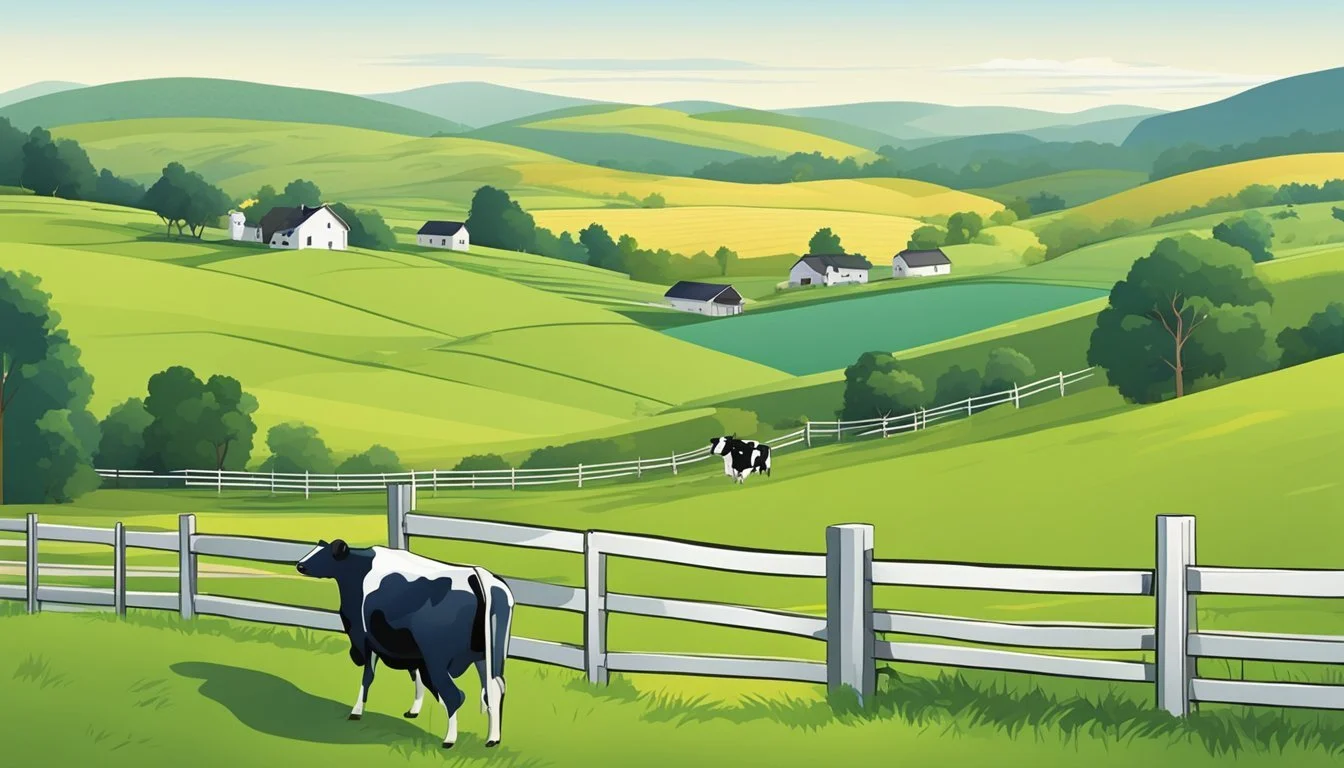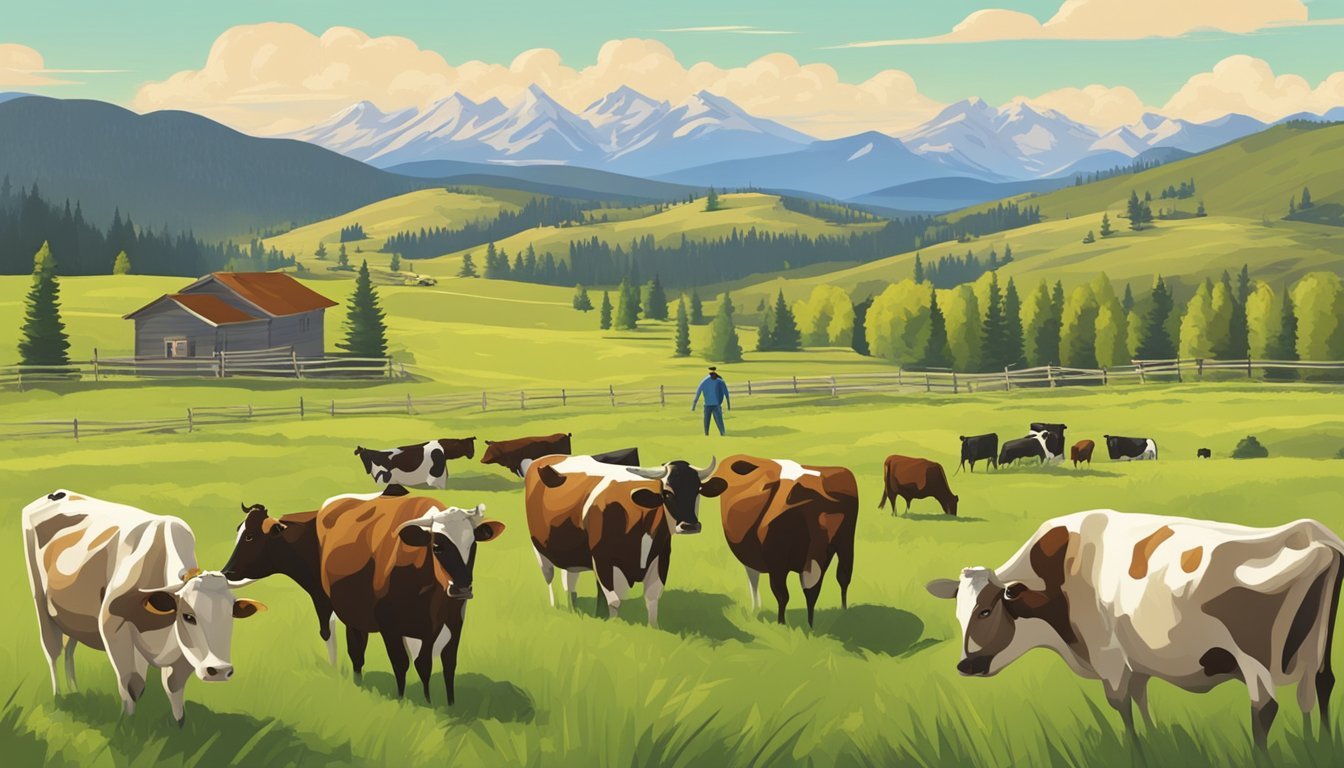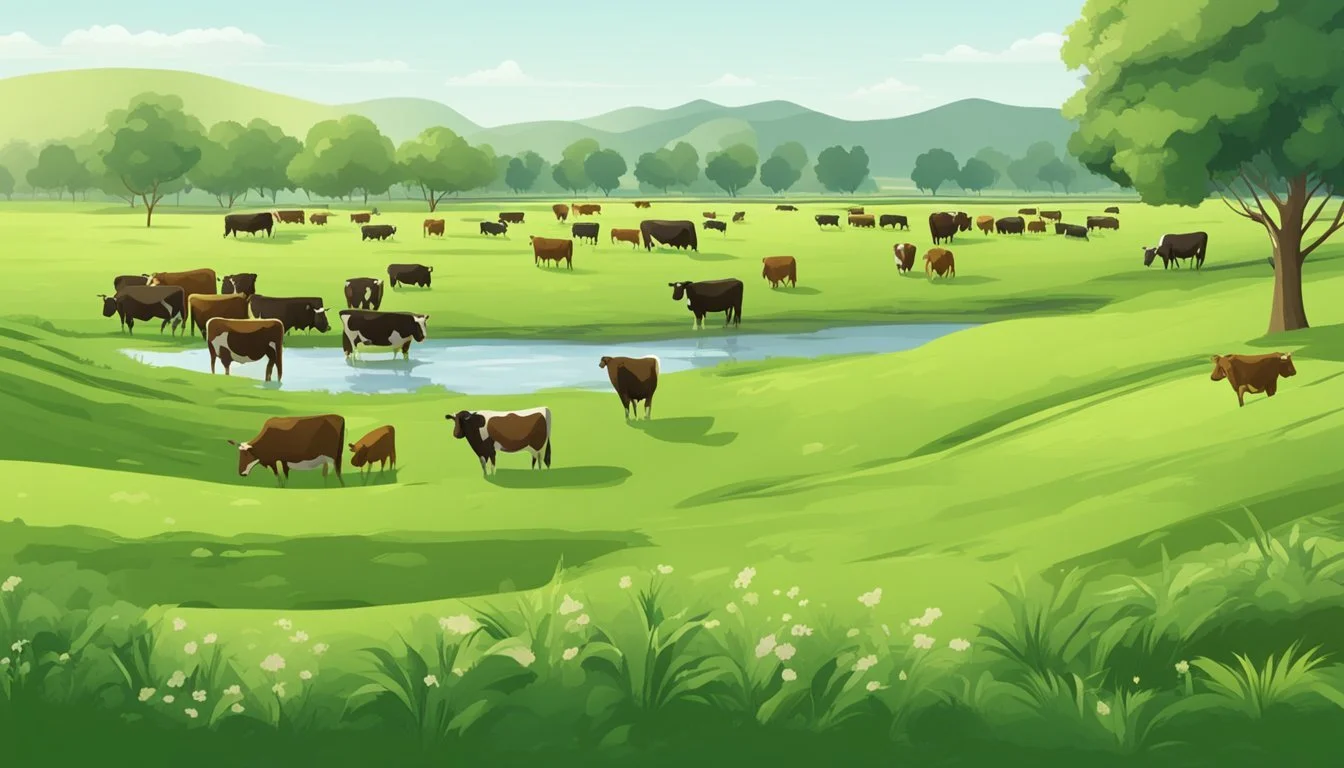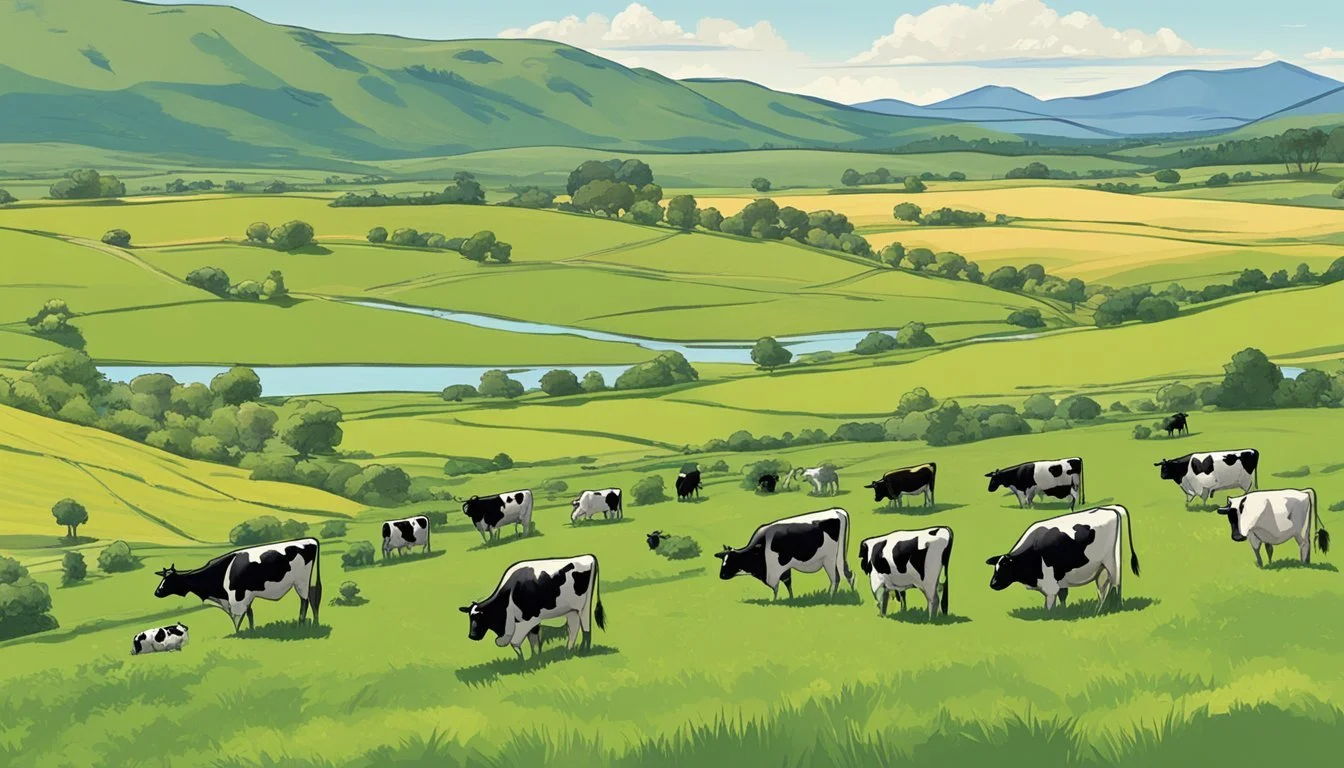Stocking Rate Montana
Determining Your Property's Cow Capacity Per Acre
Determining the appropriate stocking rate—the number of cows that can be sustained per acre without degrading the land—is vital for ranchers in Montana. Montana's wide-ranging topography and climate conditions play a critical role in the vegetation available for grazing, affecting how ranches manage their cattle. Because sustainable livestock management hinges on the delicate balance between forage production and grazing pressure, understanding the local ecosystem is essential.
In Montana, factors such as climate, soil type, water availability, and plant communities influence the potential stocking rate on a piece of property. Generally, ranchers must account for the variability in resources across different regions within the state. For example, the stocking rate on irrigated pastures may differ markedly from that on unirrigated rangelands. Additionally, the size and breed of cow, the presence of calves, and the length of the grazing season are all critical components that affect how many cows an acre can support.
By adhering to calculated stocking rates, ranchers in Montana can ensure their operations are sustainable. Across the state, these rates can vary significantly, and methods for calculating them involve a combination of animal units, available forage, and land management practices. Properly managed grazing systems not only support livestock but also contribute to maintaining healthy rangelands, preserving the environment for future generations.
Understanding Stocking Rates
Stocking rates are crucial for balancing forage availability with the number of grazing livestock to achieve optimal livestock production and rangeland health.
Defining Stocking Rate and Animal Unit
Stocking rate is a measure of the number of livestock per unit area of land for a specific time period. It is typically expressed as the number of animal units (AU) per acre. An animal unit represents a standard unit of measurement set to compare different types of livestock based on their forage consumption. One AU is equivalent to one 1,000-pound cow with or without a calf up to six months of age.
To calculate the stocking rate, one must consider the:
Type of livestock: Different animals have varying forage needs. For example, a cow might be 1 AU, whereas sheep or goats are often 0.2 AU due to their smaller size and lower forage requirements.
Weight and class of livestock: Adjustments are made based on the weight and type of the animals, as larger animals consume more forage.
Here is an example calculation:
Livestock Type Weight/Class AU Equivalent Cow 1,000 lb 1 AU Sheep 200 lb 0.2 AU
Importance of Stocking Rate in Grazing Management
Stocking rate directly influences the sustainability of the grazing ecosystem. Determining the appropriate stocking rate is essential for:
Preventing overgrazing: Overstocking can lead to land degradation and reduced forage production.
Ensuring animal health: Understocking may lead to underutilization of forage, but the right balance ensures the livestock are well-nourished.
Maintaining rangeland condition: Appropriate stocking rates support the long-term productivity and biodiversity of the grazing land.
Managing pastureland in Montana, or any region, requires a thorough understanding of the local conditions, including climate, soil type, and forage quality and quantity. These factors are all taken into account when determining the ideal stocking rate for an area.
Factors Influencing Stocking Rates
Determining the appropriate stocking rate for Montana's diverse landscapes is essential for sustainable grazing management. Various factors must be considered to ascertain how many cows per acre a property can support.
Land Area and Forage Quality
The land area available for grazing directly influences the stocking rate. It's not only the total acreage that's important, but the quality of forage it produces. High-quality forage with a balanced composition of grasses can support more livestock than land with poor forage quality. The type and density of vegetation, influenced by soil fertility and past management practices, help determine the nutritional value available to grazing animals.
Grazing Season and Forage Production
Grazing season length can vary significantly in Montana, impacting how many cows can be supported per acre. During the active growing season, forage production tends to be higher, potentially accommodating a higher stocking rate. However, one must consider that the grazing pressure needs to match the rate of forage production to maintain pasture health. Overgrazing during the peak growing months can reduce plant vigor and longevity.
Climate Impact and Pasture Conditions
Climate factors such as annual precipitation and temperature patterns play a critical role in pasture conditions and, thus, stocking rates. Drier areas or years with low rainfall will yield less forage and dry matter, reducing the number of cows that can be grazed per acre. Additionally, fluctuations in climate can cause variations in pasture conditions year over year, necessitating flexible and adaptive grazing strategies to sustainably manage livestock loads.
Calculating Stocking Rate for Montana
Determining the stocking rate for a property in Montana is critical to balance the needs of livestock with the preservation of grazing lands. This section provides a clear approach for calculating how many cows per acre a property can support.
Step-by-Step Stocking Rate Calculation
1. Determine the Average Animal Unit (AU): An Animal Unit is defined as the forage needed by a 1,000-pound cow with her calf for one month. Specifically, in Montana, the Natural Resources Conservation Service (NRCS) stipulates this requirement as 30 pounds of air-dry forage per day.
2. Assess the Forage Availability: Local research, clipped-plot yields, and grazing research must be consulted to estimate the available forage in pounds per acre on the property.
For example, assume the forage availability is 1,000 pounds per acre.
3. Calculate the Stocking Rate: Use the formula (\text{stocking rate} = \frac{\text{forage availability per acre}}{\text{AU forage requirement per month}}).
If the AU requirement is 900 pounds per month (30 pounds/day for 30 days), then the stocking rate is approximately 1.1 AU per acre (1,000 pounds ÷ 900 pounds per AU).
Adjustments for Weight and Breed Differences
Adjustments must be made to the Animal Unit based on breed and weight differences as animals may require more or less forage:
1. Adjust for Weight: If cows weigh more or less than the standard 1,000 pounds, calculate the difference in forage needs.
For example, a 1,200-pound cow would constitute 1.2 AU (20% increase).
2. Adjust for Breed: Different breeds have varying forage consumption rates. Conduct research or consult with local agricultural extensions to obtain specific breeds' consumption rates.
For instance, a breed with a 10% higher consumption rate would need a 1.1 AU designation per individual animal.
Utilizing these specific measurements and adjustments, property owners can confidently calculate the precise stocking rate for their Montana grazing lands, ensuring sustainability for the ecosystem and health for their livestock.
Preventing Overgrazing and Resource Damage
Effective grazing management ensures the sustainability of the pasture and prevents resource damage. This section discusses how to detect the early signs of overgrazing and implement grazing strategies that promote long-term pasture health.
Recognizing Signs of Overgrazing
Bare Ground: Excessive amounts of bare soil indicate that forage is not regenerating at a rate that supports the livestock demand.
Weed Proliferation: When desirable forage species are overgrazed, opportunistic weeds can invade, decreasing the overall forage quality.
Compaction: Soil compaction due to constant trampling reduces water infiltration and suffocates plant roots, hindering regrowth.
Strategies for Sustainable Grazing
Implementing rotational grazing can allow forage time to recover, which involves dividing the pasture into smaller areas and moving livestock between them on a schedule.
Forage Demand and Utilization Rate:
Adjusting the stocking rate to align with the forage demand is critical. This rate reflects the amount of forage available to sustain a certain number of livestock over a set period.
Utilization rate, typically around 25-30%, helps maintain pasture health by ensuring that forage is not overgrazed.
It is vital in grazing management to monitor these aspects diligently and adjust as necessary to maintain a sustainable and productive pasture.
Grazing Management Techniques
Effective grazing management in Montana hinges on strategies that optimize forage use while ensuring the sustainability of pastureland. Implementing rotational grazing and carefully selecting forage types can significantly enhance acreage efficiency and biodiversity.
Rotational Grazing and Paddocks
Rotational grazing is a technique that involves dividing a pasture into smaller areas known as paddocks and moving livestock between them. It allows grass in rested paddocks to regenerate, leading to more efficient forage consumption and reduced soil erosion. To implement this:
Divide the land into several enclosures.
Migrate animals to a new paddock once forage is grazed to an appropriate level.
Monitor forage recovery in the resting paddocks before reintroducing livestock.
This practice supports biodiversity as diverse plant species recover at different rates, thereby fostering a variety of habitats within the pasture.
Optimizing Forage Type and Consumption
Choosing the right forage type is vital for both livestock nutrition and land management. High-quality forage supports better animal health and productivity, while the right species of plants can improve soil health and contribute to the ecological balance.
Select species that are well-adapted to the climate and soil of the area.
Plant a mixture of grasses and legumes to enhance soil nitrogen content and forage quality.
Manage grazing to promote even forage consumption and prevent overgrazing of favored species.
By judiciously managing forage type and consumption, ranchers can maximize the number of cows per acre their property can support while maintaining the health and productivity of both the land and the livestock.
Legal and Financial Considerations
When evaluating how many cows an acre of property in Montana can support, property owners must consider the legal and financial implications of grazing and pasture leases, as well as lease rates and liability insurance. These considerations ensure that the land is utilized sustainably and within legal boundaries, while also safeguarding the financial interests of all parties involved.
Understanding Grazing and Pasture Leases
Grazing leases and pasture leases are contractual agreements between a landowner and a livestock owner. They allow for the use of pastureland for grazing in exchange for payment. To avoid disputes, a comprehensive grazing lease should include a detailed legal description of the property, the duration of the lease, livestock grazing limits, and responsibilities of both parties. It is customary to specify the number of animals per acre, reflecting the property's carrying capacity to prevent overgrazing.
Lease Rates and Liability Insurance
When determining lease rates, factors such as forage availability, the demand for grazing land, and local market conditions are taken into account. Rates can be established on a per-acre basis or based on the type and number of livestock, referred to as per animal unit month (AUM).
Liability insurance is vital for both landowners and lessees in grazing agreements. It protects against potential legal claims arising from the grazing activities. The lease agreement should clarify which party is responsible for carrying liability insurance and outline the extent of the coverage. This ensures that both parties are protected financially in case of unforeseen circumstances.
By paying careful attention to these legal and financial aspects, property owners can make well-informed decisions that secure the land’s productivity and their own business interests.
Supporting Biodiversity and Ecosystem Health
Proper management of stocking rates on a property in Montana influences not only the livestock carrying capacity but also the biodiversity and ecosystem health. Ensuring diverse forage and accommodating various livestock species underpin the overall vitality and resilience of the rangeland.
Diversity in Forage and Livestock Species
Diversity in forage species, including plants like clover and rye, contributes greatly to soil health and nutrition availability for grazing livestock. Clover, being a legume, fixes nitrogen in the soil, enriching it for other plant species. Rye, as a cereal grain, provides a sturdy forage option that survives in a variety of conditions, thereby maintaining ground cover and preventing erosion. This variety supports different fauna and aids in creating a balanced ecosystem.
Incorporating different livestock species, such as cows and chickens, can optimize forage utilization. Chickens, for instance, can contribute to pest control and offer natural fertilization, while cattle primarily graze on the grasses and weeds.
Benefits of Biodiversity in Grazing Systems
Biodiversity within grazing systems offers multiple benefits:
Improved Forage Quality: Biodiversity leads to higher forage quality as different plants offer varied nutrients. This translates to better animal health and potentially higher milk and meat quality.
Pest and Disease Resistance: A mixture of species provides a more robust system against pests and diseases, reducing reliance on chemical controls.
Soil Health: Diverse root systems from a variety of plants improve soil structure and water retention.
Wildlife Habitat: Diverse rangelands support a wide range of wildlife, contributing to the richness of the local ecosystem.
In Montana's varied climate, stewarding the land to support a rich tapestry of plant and animal life entails understanding the delicate balance within grazing systems. Ranchers who invest in this balance can see improved land productivity and ecosystem function.
Montana-Specific Grazing Resources
Grazing management in Montana requires understanding the unique characteristics of the region's land types and modifying stocking rates to suit varying ecological conditions. Crucial to maximizing the yield of livestock while maintaining land health, these resources offer guidance tailored to Montana's diverse landscapes.
Types of Grazing Lands in Montana
Montana's grazing lands are diverse, ranging from irrigated and subirrigated seeded pastures which can support higher stocking densities, to dryland seeded pastures and grain crop aftermath which offer less forage and therefore support fewer cows per acre. Also part of Montana's grazing resources are dryland hay aftermath and irrigated hay aftermath, which can be utilized for grazing after the hay has been harvested. Furthermore, dry coniferous forests provide additional grazing opportunities, albeit with much lower forage availability and therefore lower stocking rates. Understanding the specific forage capacity of each type of grazing land is critical for ranchers.
Customizing Stocking Rates for Montana Regions
When customizing stocking rates, it's necessary to consider the regional differences across Montana. For instance, in regions receiving 15-19 inches of precipitation annually, an initial stocking rate of 2.2 acres per Animal Unit Month (AUM) is often suggested, while in areas with 10-14 inches of precipitation, the rate increases to 3.3 acres per AUM. The term AUM refers to the amount of forage needed by one animal unit, typically a 1,000-pound cow and her calf, for one month. It's important for ranchers to calculate their stocking rates carefully, taking into account the total acreage of all pastures, including those not grazed every year, to ensure they do not exceed the sustainable capacity of their land, which could result in overgrazing and land degradation.







